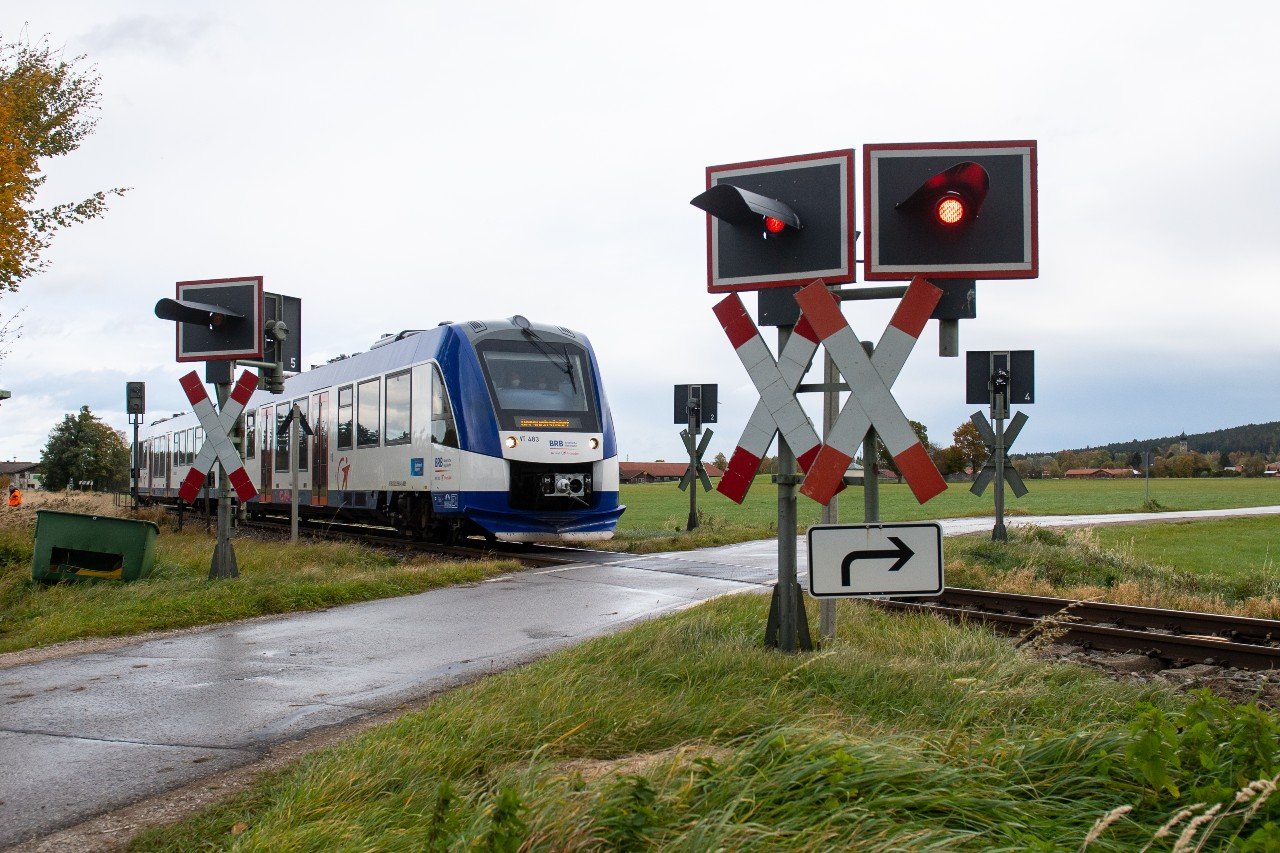Last year, a major survey conducted by city guides publisher Time Out crowned Berlin the city with the best public transport in the world. The extensive bus, tram and train network was praised by 97 percent of Berlin residents, who noted that transport in the German capital tended to be safe, comfortable and reliable.
But for those who travel a short distance out into Brandenburg, Berlin’s rural neighbour, the contrast couldn’t be more striking: trains stop running at 6pm, buses come every 2-3 hours and residents often face a lengthy trek to their nearest bus or train station.
This divide was confirmed in a 2021 study by Deutsche Bahn subsidiary ioki that looked at public transport connections in Germany. Researchers found that while around 27 million people who lived in German cities had very good access to public transport, the 55 million who lived in suburban or rural areas were much more badly served.
READ ALSO: 55 million people in Germany have ‘inadequate public transport’
According to Transport Minister Volker Wissing (FDP), rural areas are in “urgent need” of solutions to these gaps in public transport.
Speaking to DPA on Tuesday, the FDP politician set out his plans for local ‘transfer hubs’ that he said would encourage more car users to use public transport – even in non-urban areas.
What exactly is a transfer hub?
A ‘transfer hub’ – or Umstiegs-Hub in German – is a place designed for travellers to switch from one mode of transport to another. As an example, Wissing mentioned easily accessible train stations with parking spaces, good bus connections, cycle paths and e-car charging ports where people could easily switch from their car to a quick commute by rail into the nearest city.
Advertisement
“We need more attractive transfer points in rural areas,” the Transport Minister told DPA. “The federal states could consider for themselves which locations in which regions would be best for such transfer hubs. From there, rail connections could then be offered to the metropolitan regions at regular intervals.”
As opposed to taking “coercive” measures to force the switch from car to public transport, a “constructive approach” that considers both modes of transport would take the country further, Wissing said.
“I believe that there is an urgent need in Germany to orientate the structures in rural areas towards more multimodal transport,” he explained. “The convenient flexibility of the car and the efficiency of the railway can be combined if the infrastructure is right.”
READ ALSO: Why (and where) Germans are choosing to go on holiday by car this year
What impact could this have?
With Germany’s transport sector repeatedly missing its climate targets, the ministry needs to find ways to reduce emissions and encourage a more widespread use of sustainable transport.
According to Wissing, this could have a much bigger impact in the countryside than it would in a city like Frankfurt or Berlin, since people in rural areas tend to travel longer distances.
Advertisement
“We can achieve a situation where a commuter travels perhaps 20 or 25 kilometres to a transfer hub instead of 100 kilometres each way to work by car,” said Wissing. “That would be up to 150 kilometres less per day – a huge potential reduction in CO2.”

A regional train run by the Bayerischer Oberlandbahn stops near Warngau. Photo: picture alliance/dpa | Lennart Preiss
But climate groups and transport companies have been pushing for a much more ambitious approach to expanding public transport in the countryside.
In its six-point plan for delivering good rural public transport, for example, the Association of German Transport Companies (VDV) calls for rail-bus connections that run at least hourly and flexible, on-demand public transport options.
However, Wissing said that a lack of skilled labour and low demand on rural routes would make it difficult to offer the kind of bus and train services VDV is calling for.
“If the bus used to come every three hours and in future it will come every two hours – what kind of improvement would that be? People would stay in their cars,” he said.
READ ALSO: What to know about Deutsche Bahn’s summer service changes
Where does the Deutschlandticket come into this?
According to the VDV, the €49 monthly travel pass, which has been valid for more than a year on local and regional transport throughout Germany, has an average of 11.2 million subscribers per month.
So far, however, it is primarily a ticket that is used in urban regions, with only 21 percent of Deutschlandticket users coming from rural areas.
Advertisement
According to VDV surveys, around 16 percent of Deutschlandticket users have been travelling by car less often since taking out the subscription.
Nevertheless, the shift has not yet materialised to the extent the government hoped for.
Meanwhile, federal and state transport ministers have been discussing an expansion and modernisation pact for local public transport for some time. The federal states are also calling on the federal government to increase the billions in regionalisation funds, which are used to order services from regional public transport companies.
With reporting by DPA
Read More: World News | Entertainment News | Celeb News
Locals








